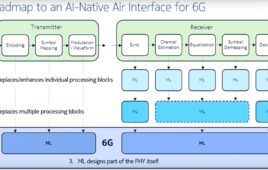After years of dominating the mobile phone market, Blackberry seemed to make a quiet retreat into the shadows after the iPhone’s rise to popularity. Unbeknownst to many people, the company has since redirected their focus from cellphones and broadened their portfolio, where they tapped into several different technological markets. The company recently announced a collaboration with Pana-Pacific, where Blackberry Radar, an asset tracking solution providing unparalleled visibility into cargo and mobile fleet assets, will be available in over 2800 heavy-duty truck dealerships throughout North America.
Pana-Pacific distributes audio and video systems, communication products, mobile appliances, satellite radio products, along with truck and safety components. Per the agreement, Pana-Pacific’s customers will gain access to Blackberry’s Radar-M (designed for trailer and containers) and Radar-L (designed for flatbeds, chassis, containers, heavy machinery, and other valuable transportation or non-powered equipment assets).
“At Pana-Pacific, we strive to offer unique products and programs that exceed the needs and expectations of out commercial vehicle customers,” says Pana-Pacific CEO John Trenberth. “We decided to add Blackberry Radar to our portfolio because we believe the near real-time information it provides will empower our customers to make better business decisions and improve the overall performance of their transportation operations.”
The Blackberry Radar utilizes a self-contained device that captures location and status information regarding equipment and cargo. The platform enables fleet managers and equipment owners to make smarter business decisions, which in turn should save time, money, and resources. Blackberry Radar is an innovative, fast install and data-driven solution, providing near real-time information (like vehicle location, route and mileage, temperature, humidity, door status, and cargo load state) on a single intuitive online dashboard.
The radar runs on high-capacity lithium chloride batteries, which (by design) aren’t rechargeable to eliminate failure points of wired connections of an external power supply from the tractor or an energy source like solar panels. If fleets configure Blackberry Radar to transmit data in 15-minute intervals, the batteries can reportedly last over three years. Most fleets would be satisfied using two-hour transmission intervals, a rate that would prolong the batteries to last around eight years.
The technology can be installed under 10 minutes, and fleets can expect zero maintenance (even in harsh environment conditions like extreme cold, heat, humidity, and altitudes). Blackberry Radar collects 100 times more data than conventional GPS-based track and trace solutions, using this information to construct a 360-degree visualization of a customer’s assets for ensuring safety, security, and regulatory compliance. The mobile device documents location and sensor data in five-minute increments, during which intervals of the collected information are wirelessly transmitted to the cloud-based system that prolongs battery life, while meeting a trucking fleet’s information needs.
After transmission, data is securely stored on a cloud platform, which maintains privacy of user information at all times. One notable benefit of using both systems is fleets can give drivers visibility of trailers, chassis, or container locations upon being dispatched to the equipment’s location. The trailer asset’s whereabouts are made visible to the driver in Fleet Complete’s in-cab display, which mitigates time spent searching. Drivers can even use the radar app to locate available loads from freight brokers, provide visibility to shipments, and even hours-of-service status.




